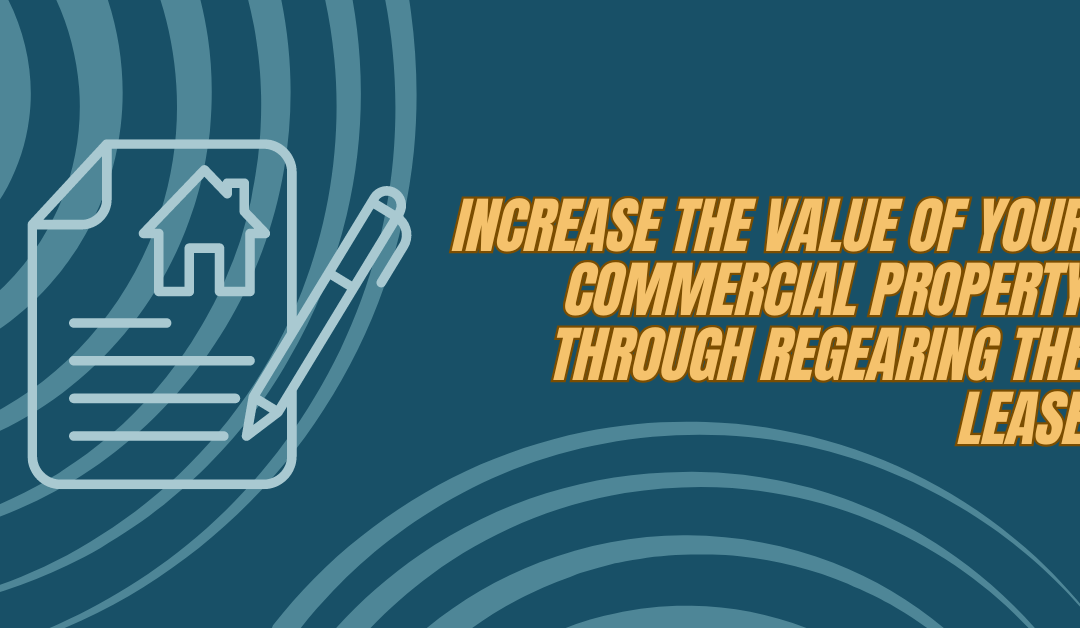Increase the value of your commercial property through regearing the lease. Regearing the lease is a strategic tool that can significantly boost the value of your commercial property. But what does regearing the lease entail? In simple terms, it involves renegotiating the terms of an existing lease with your tenant. This could mean either terminating the current lease and drafting a new one or amending the existing lease with specific changes.
Why Regear a Lease?
The primary reason for regearing a lease is to increase the value of your commercial property. The value of such a property largely hinges on ensuring that tenants are paying market rent over the longest possible term. The longer the lease at market rent, the more valuable your property becomes. Additionally, having tenants with strong financial backing or securing a substantial deposit from smaller tenants reduces the risk of non-payment, thereby increasing the asset’s value.
Regearing isn’t just beneficial for landlords; tenants may also have reasons to initiate lease renegotiations. However, as a landlord, you should only consider changes if they also benefit you.
The Regearing Process: A Step-by-Step Guide
- Review Existing Leases: Begin by thoroughly reviewing your existing leases. Whether you have one tenant or multiple, identify key terms that could be adjusted to your advantage. Pay particular attention to break clauses—these are clauses that allow the tenant or landlord to terminate the lease early, typically after a certain period.
- Approach the Tenant Informally: If a break clause is approaching within the next two years, casually inquire if the tenant plans to enact it. This can be done during routine inspections or phone calls. Knowing their intentions helps you plan ahead. If a tenant expresses a desire to leave, you might encourage them to assign the lease to another party, possibly even charging a premium for the incoming tenant.
- Propose Removing Break Clauses: If the tenant isn’t planning to enact the break clause, propose removing it altogether. This action secures a longer rental income period, enhancing your property’s value. Be prepared for the tenant to ask for something in return, such as a rent discount or some other concession.
- Offer Lease Extensions: Another strategy is to offer lease extensions. For example, if a tenant has two or three years remaining on their lease, you could offer to extend it for another five years at the same rent. You might also propose aligning future rent increases with an index like the Retail Price Index (RPI) instead of market reviews. This approach provides both parties with security: you secure rent over a longer period, and the tenant knows their future rent commitments.
- Utilise Rent Reviews: A rent review presents another opportunity to regear the lease. If you’ve just agreed on a market rent, suggest extending the lease at that rate. This is particularly effective if the lease has two or three years left. By extending the lease term at the current market rent, you secure income for a longer period.
- Evaluate Service Charges: Consider how service charges are structured in your lease. While changing service charges can be complex, it might be worth negotiating if a tenant wants something from you, such as a rent discount. Transferring responsibility for fluctuating costs like utilities to the tenant can stabilize your income and increase your property’s value.
What to Offer Tenants in Exchange
Tenants won’t agree to lease changes without some incentive. Here are a few options you might offer:
- Rent-Free Periods: Offering one to three months rent-free in exchange for lease adjustments can be an effective incentive.
- Rent Discounts: A slight reduction in rent could sweeten the deal.
- Capital Contributions: Consider making a financial contribution to a tenant’s improvements or renovations.
The key is to weigh how much value the lease regear will add to your property against the cost of the concessions you offer. If the tenant is requesting a change, use this as leverage to negotiate terms that benefit you.
Ensuring Long-Term Value
Securing market rent for the longest possible period is crucial to increasing your property’s value. However, pushing for rent increases that exceed the market rate can backfire. Tenants might seek more affordable premises, leading to vacancies that lower your property’s value. Instead, focus on ensuring that rent is in line with the local market. This approach not only maintains tenant satisfaction but also ensures that your property remains a valuable asset.
Summary
Regearing a lease is a powerful tool for boosting the value of your commercial property. Here’s a quick recap:
- Review your leases: Identify opportunities to extend or amend terms in your favor.
- Engage with tenants informally: Gauge their interest in renewing or amending the lease.
- Offer incentives: Be prepared to offer rent-free periods, discounts, or capital contributions to secure advantageous lease terms.
- Prioritise market rent: Ensure that your tenants are paying market rent for the longest possible term, rather than seeking unsustainable rent increases.
By following these steps, you can enhance your property’s value, create stability in your rental income, and foster positive relationships with your tenants. Regearing isn’t just about making your property more valuable; it’s about creating a win-win situation where both you and your tenants benefit from the arrangement. So, take the time to review your leases and start the conversation with your tenants—you might be surprised at the value you can unlock.
You can catch previous blog posts here and listen to the podcast here.




